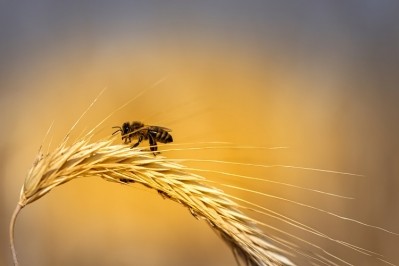Winemaking with 25% less pesticides: AI predicts disease outbreaks for ‘greener’ grapes

Out in the field, grapevines are susceptible to a multitude of threats, ranging from disease to rot and pests. Pesticides, including subsets fungicides and herbicides, can help ward of potential disease and secure yield.
But the quantity of pesticides used in winemaking is excessive, according to Richard Petersik, CEO of German start-up VineForecast, who is concerned about the inefficient use of agricultural inputs in the sector.
Pesticides can negatively impact soil microorganisms and decrease soil’s general biodiversity. When pesticides are flushed into water streams they can also harm microorganisms and decrease water quality. Biodiversity decline, for example in reduced pollinator numbers, has also been linked to pesticide use.
Together with brother and CIO Paul Petersik and CTO Max Nowack, Petersik is working to combat excessive pesticide use in winemaking with the use of artificial intelligence. “Our ambition is to help farmers cut down pesticide use by 25%,” he told FoodNavigator.
‘Hyper-local’ disease risk warnings
From an environmental perspective, the over-use of pesticides is the ‘biggest problem’ facing winemakers, according to Petersik. “Compared to arable farming, such as wheat or corn farming, they’re using up to 25 times more.”
This is because pesticides help vine growers ensure crop yield. As a result, they spray frequently, largely according to predetermined schedules and irrespective of external factors, such as the weather. “Managing vineyards can be a complex task to the large number of areas per farm and different grape varieties. As a result, winegrowers tend to treat their areas in a standardised manner, applying plant protection basically every 10 days.”
But weather and environmental conditions are intrinsically linked to disease risk can significantly vary field by field. If farmers had better advice on levels of disease risk, they would be able to reduce pesticide use during low-risk periods in certain areas. This is what VineForecast has developed for its winemaking customer-base.

VineForecast is comprised of two components. The first is a ‘microscale’ weather forecasting solution powered by AI. While farmers are already using conventional weather forecasts daily, current offerings are not localised enough to their fields to allow for precision-based decision making, we were told. VineForecast offers ‘hyperlocal’ weather forecasting for areas as small as 25-metres-squared.
“With the help of AI, we make weather forecasting ‘microscaled’. We can predict weather and all kinds of variables, from temperature to humidity, to predict disease development risk. Diseases are always in the field, they’re just waiting for the right microclimatic conditions to grow. And we can predict those conditions.”
The second element of VineForecast’s software lies in farm management. The farmer can log which pesticide they’ve sprayed where, which when integrated with disease and weather predictions, can offer recommendations for future spraying schedules.
Are traditional farmers willing to adopt new tech?
The potential benefits for the environment, as well as the winemaking industry, are far-reaching. Aside from using fewer pesticides, which can have negative impacts on soil, fresh water, and biodiversity, VineForecast technology has also been designed to secure yield. For farmers, this is the ‘most important’ element, we were told.
But there are also financial incentives in using fewer pesticides, with the founders aspiring to help farmers cut pesticide use by a quarter.
In reducing pesticide use throughout the cultivation process, pesticide residue in the finished wine product would also be reduced. Research suggests pesticides residues can significantly influence wine flavour, said the CEO.

But are farmers, which have been cultivating grapes for winemaking for centuries, willing to onboard new technologies? VineForecast believes that once winemakers understand its technology can replace physical in-field weather stations, they are ‘very open’ to testing the technology.
The start-up also wants to make sure it brings down ‘as many hurdles as possible’ in the use of the technology – particularly for farmers unfamiliar with digital solutions. To use VineForecast, farmers can sign up to the platform online or via an app, and draw their plot of land into an online map (or else import data from a land registry). From there, the farmer can access ‘any kind of forecast’ immediately. “This has a huge benefit, compared to hardware solutions like weather stations that need to be bought, installed and maintained,” we were told.
And indeed, farmers are already using the solution. VineForecast currently has 70 paying customers in the DACH region and more than 650 registered farms. “This is already showing that people are willing to adopt new kinds of approaches.”
Next steps
VineForecast is targeting winemakers of all sizes. One current customer has a vineyard of just 0.5 hectares in size, while its largest customer operates over more than 100 hectares. As a general rule, the start-up is keen to on board customers operating more than 20 hectares of vines.
Currently focusing on German speaking regions across Germany, Switzerland and Austria, neighbouring France – one of best renowned wine growing regions of the world – has also caught its eye. VineForeast is currently raising funds to market its product internationally.

























